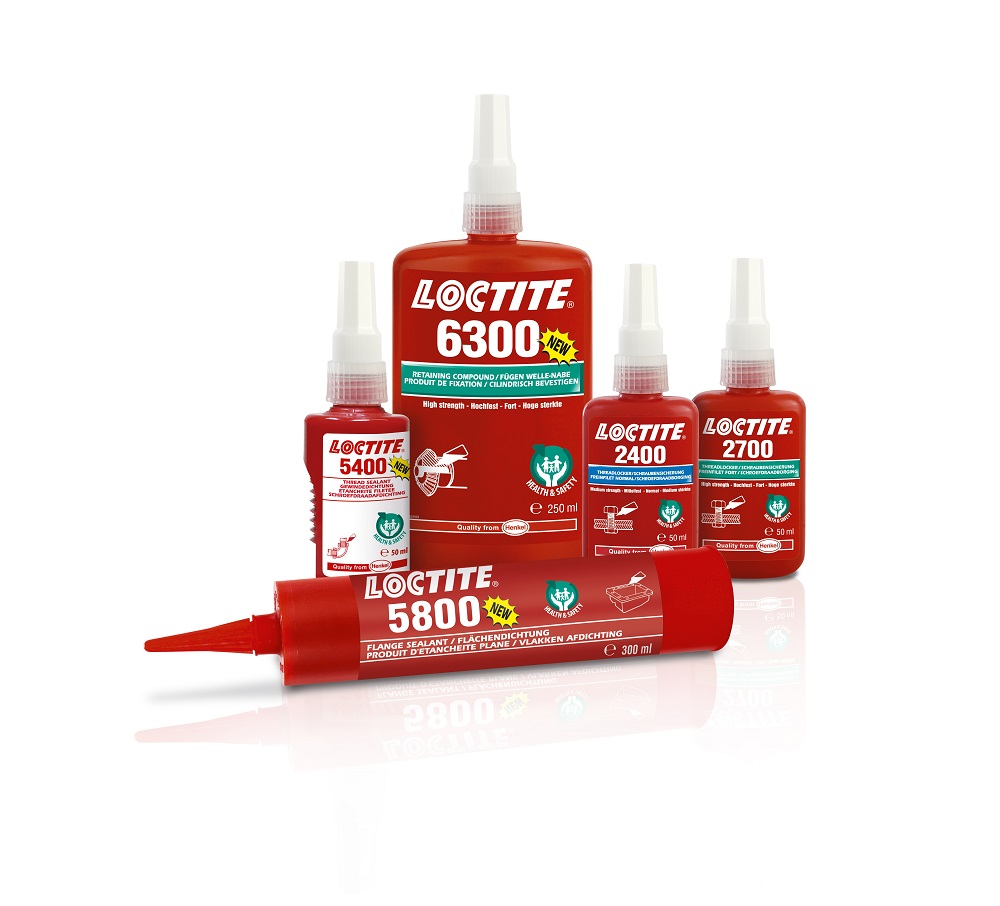
The use of bonding systems is gaining increasing popularity among machine builders as more and more come to recognise the potential advantages on offer. For instance, bonding systems enable manufacturers to incorporate new materials into their designs, combining their properties to best effect. Indeed, taking a design approach that embraces adhesives and sealants means that imagination becomes the only restriction in creating a new generation of machines.
Compared with welding, structural adhesives that cure at room temperature do not alter material properties, nor do they create residual stress, which in turn leads to more durable, fatigue-resistant joints. In addition, bonding processes consume less energy, the equipment used is less costly and fewer safety precautions are required in the factory.
A further benefit is that lightweight materials such as plastics and composites can be incorporated and joined with other materials, while flanged joints in casting parts can be sealed and reinforced using anaerobic liquid gaskets, which enhances their load transfer capability. These materials prevent fretting corrosion between mating flanges, thus providing long term machine reliability.
Manufacturing machinery is evolving continuously in response to new industry demands. Trends such as energy efficiency and the requirement for increased production rates and machine availability mean that industrial machine builders are under huge pressure to build faster equipment without compromising attributes such as reliability and productivity. To fulfil this task, machinery manufacturers must safeguard all mechanical components by guaranteeing that part dimensions and movements are not compromised.
Anaerobics have evolved dramatically since they were first discovered. Modern properties include high temperature resistance of around 200ºC in many grades and compatibility with oily surfaces and low surface sensitivity, which means that most grades cure even on inactive surfaces such as stainless or passivated metals.
LOCTITE® threadlockers are well known by machinery manufacturers, although their use is still associated with heavily loaded bolts. In terms of cost, threadlockers are as cheap as washers and significantly cheaper than other mechanical solutions such as high-quality bolts or tab washers. They are also more efficient in ensuring bolt clamping force. Vibration is not only a source of bolt loosening; it also causes issues such as temperature change, pressure load and part surface settling.

Fretting corrosion is another major problem that can be prevented using anaerobics. Flanges sealed with liquid gaskets not only prevent leakages and the ingress of fluids, but also reinforce the joint against any local shear stresses, thereby preventing micro movement. As transversal forces are prevented, load transfer capability is actually enhanced without any design modifications and with no need for surface finishing improvements.
Cylindrical joints can also be retained using anaerobics. In this case, stress distribution is more even, preventing all typical fatigue related failures that occur when keyways and other mechanical systems are used. Compared with welding, the metal properties are not modified by high temperatures and no residual stresses are generated.
One example is that rollers can now be manufactured using this cheaper and more sustainable system. The bondline evenly transfers the dynamic loads expected during roller operation to reduce fatigue related failures. In addition, rollers of all sizes and functions, including conveyors, lamination systems, wrapping and thermoforming rollers, converting equipment and calendering machines, can be manufactured using this system.
Not long after anaerobics were introduced, another adhesive technology was added to the LOCTITE range: cyanoacrylates, or superglues. These adhesives were soon adopted by machinery manufacturers to bond materials such as plastics and rubbers used in door seals, tags and other parts. Today, Henkel says cyanoacrylates are unrivalled in terms of performance and manufacturing speed, as the latest developments have increased temperature resistance by 50%, up to 120ºC. Moreover, fixture speed is just a few seconds in most working conditions, an attribute that no other commercial grade is able to equal.
Temperature resistance is not only noticeable at close to the upper limit of 120ºC, but these adhesives exhibit higher strength than competitor products even at temperatures of around 50 - 60ºC, where the resistance of most grades falls dramatically. Several food compliant grades are available in addition to medically approved grades that have been used for decades to manufacture disposable medical devices.
In short, Henkel believes its bonding systems such as LOCTITE anaerobics and cyanoacrylates have a role to play in making life easier for machine builders – the benefits are high and the costs are low, as more and more are discovering to their competitive advantage.

Will joined Fastener + Fixing Magazine in 2007 and over the last 12 years has experienced every facet of the fastener sector – interviewing key figures within the industry and visiting leading companies and exhibitions around the globe. Will manages the content strategy across all platforms and is the guardian for the high editorial standards that the brand is renowned.





